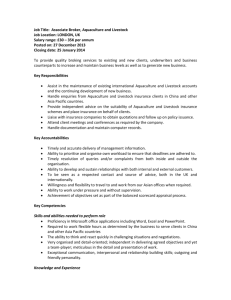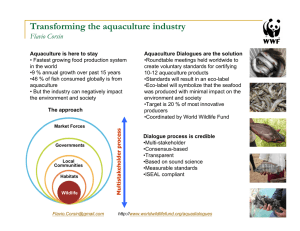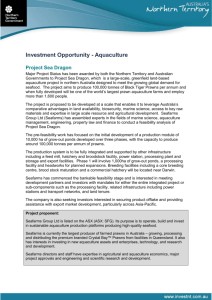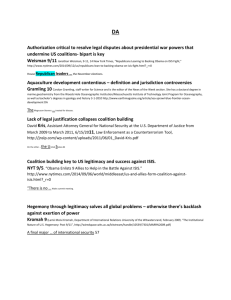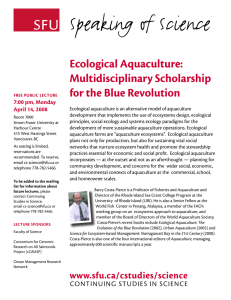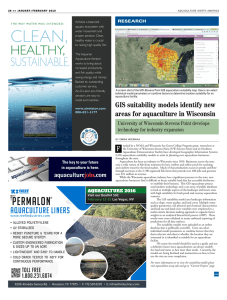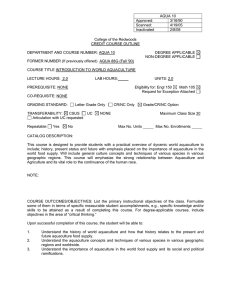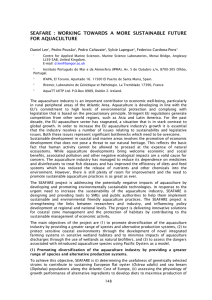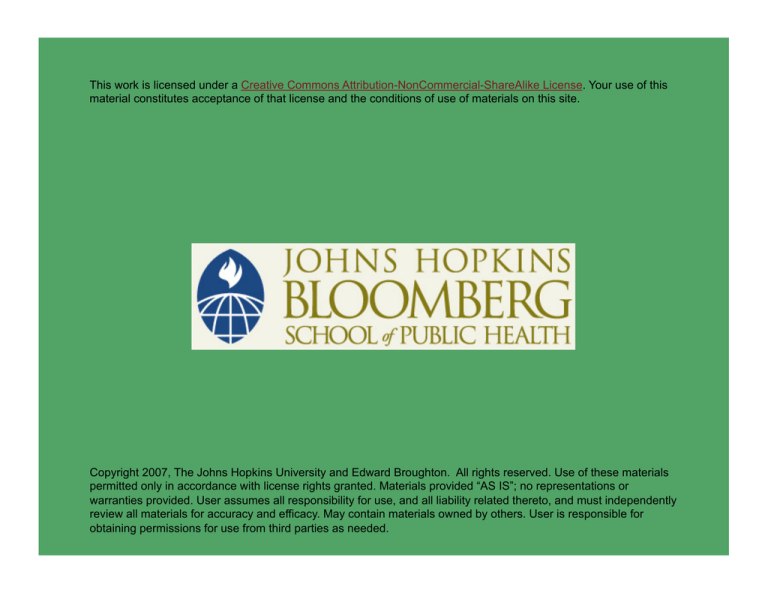
This work is licensed under a Creative Commons Attribution-NonCommercial-ShareAlike License. Your use of this
material constitutes acceptance of that license and the conditions of use of materials on this site.
Copyright 2007, The Johns Hopkins University and Edward Broughton. All rights reserved. Use of these materials
permitted only in accordance with license rights granted. Materials provided “AS IS”; no representations or
warranties provided. User assumes all responsibility for use, and all liability related thereto, and must independently
review all materials for accuracy and efficacy. May contain materials owned by others. User is responsible for
obtaining permissions for use from third parties as needed.
Section B
Health Implications of Aquaculture
Science and Aquaculture
Biomedical science has not kept pace with the rapid increase in
aquaculture production
Government and industry have no incentive to study health
consequences of practices
Potential pathways identified
Paucity of epidemiological evidence
3
Occupational Hazards in Aquaculture
Dangerous physical environment
- Musculoskeletal injuries
- Drownings, diving accidents
- Exposure to harmful chemicals
- Exposure to bacteria and trematodes
4
Consumer Health Risks
Exposure to antibiotics
- Applied in water, aquafeeds
- Prophylactic use
- Remains in environment
- Similar problems to farm animal agriculture misuse
Sources: Jacobs and Chenia. (2006). Characterization of integrons in tetracycline resistance determinants in Aeromonas spp.
isolated from South African aquaculture systems; Zhao et al. (2002). Antimicrobial resistant serovars isolated from imported
foods; Cabello. (2006). Heavy use of prophylactic antibiotics in aquaculture: A growing problem for human and animal health
and the environment.
5
Consumer Health Risks
Exposure to heavy metals
- Levels depend on aquafeeds used
- High levels when animal agriculture waste used in ponds
- Lead, cadmium, zinc, copper, methyl mercury
Sources: Andreji et al. (2006); Sutherland et al. (2007); Håstein et al. (2006).
6
Environmental Concerns
Effluent discharge from either open systems or closed systems
without adequate treatment
- Eutrophication
- Toxic algae blooms
- Antibiotic residue
- Pollution to downstream consumers
- Diseases
7
Environmental Concerns
Excess feed and oil accumulates in water
- Attracts wild fish: disease
- Attracts natural predators: mortality
- Attracts wild fowl: avian influenza
8
Environmental Concerns
Escapees from fish pens
- Decrease fitness of wild stock
- Outcompetes indigenous species
9
Environmental Concerns
Poor land/coastal management
- Clearing of mangrove areas for aquaculture, leaving coastal
areas more vulnerable to tidal surges
- Water diversion interfering with flood mitigation
Mangroves cleared for shrimp farm
Image source: Jose Aguilar Manjarrez, FAO. Retrieved from www.irc-online.org/images/irc/391.jpg
10
Potential Solutions
Improved regulations for aquaculture
- Restrict use of chemicals and veterinary drugs
- Develop vaccines
- Restrict effluent discharge
11
Potential Solutions
Better stewardship of wild fisheries
- Restriction of overfishing
- Reduction of bycatch
- “Ranching”
12
Conclusion
Do benefits of improved diet and food security outweigh harmful
aspects of industrial aquaculture?
Processes by which adverse aquaculture practices can be
detrimental to human health are well documented
More research needed for epidemiology on specific outcomes
13



